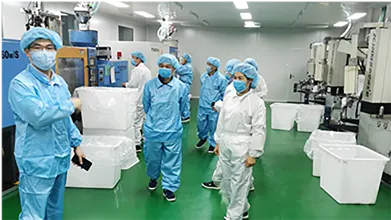Cap for Pharmaceutical Container for Safe Storage and Dispensing of Medicines
The Evolution and Significance of Medicine Bottle Tops
In the world of pharmaceuticals, the design and functionality of packaging play a critical role in ensuring safety, efficacy, and convenience for consumers. Among the often-overlooked elements of this packaging is the medicine bottle top. While it might seem trivial, the design and technology behind these bottle tops are essential for protecting the integrity of the medication within and providing ease of use for patients.
The primary function of a medicine bottle top is to seal the contents of the bottle, ensuring that the medications remain uncontaminated and effective until they are needed. Throughout history, the types of seals and closures used for medicinal bottles have evolved significantly. Early medicine containers used corks or wax seals, which were susceptible to degradation over time. With advancements in materials science, manufacturers began to utilize plastic and metal for caps, leading to improved durability and functionality.
One of the most significant innovations in medicine bottle tops has been the introduction of child-resistant closures. These caps are designed to be difficult for young children to open, while still being accessible to adults. The development of these caps has reduced accidental poisonings in homes with children. According to the American Association of Poison Control Centers, child-resistant packaging has been credited with decreasing the number of poisonings by approximately 30% since its widespread adoption in the 1970s. This statistic highlights the direct impact that design innovations in bottle tops can have on public health.
In addition to child safety, various bottle tops have also been designed to provide tamper-evidence. These closures often include features that visibly indicate if a bottle has been opened, which is vital for maintaining the trust of consumers in their medications. Tamper-proof seals have become standard in the industry, especially following instances where tampering with over-the-counter products led to health crises in the late 20th century. Such incidents brought to light the importance of secure packaging and inspired regulatory bodies to enforce stricter guidelines on packaging safety.
medicine bottle top

Beyond safety features, medicine bottle tops have also seen innovations aimed at enhancing the user experience. Flip-top caps, for example, provide easy access to the medication, eliminating the need for traditional screw caps that can be difficult for some individuals to open, particularly the elderly or those with limited dexterity. These designs can make a significant difference in adherence to medication regimens, as the ease of use can encourage patients to take their medications as prescribed.
Moreover, the labeling on medicine bottle tops has evolved to include critical information that aids in the consumer's understanding of the product. Clear, bold fonts and color-coding can quickly differentiate between different medications, while printed dosage instructions ensure that patients are more likely to follow the prescribed regimen accurately. In an era of information overload, a well-designed bottle top can make a world of difference in enabling patients to recognize and understand their medications.
The importance of sustainability is also becoming a significant consideration in the design of medicine bottle tops. With growing awareness of environmental issues, many pharmaceutical companies are exploring alternative materials that offer both safety and reduced environmental impact. Some manufacturers are investing in biodegradable plastics or recyclable materials for their closures, aligning with global sustainability goals. This shift demonstrates that while the primary function of a medicine bottle top is to protect and preserve medication, their environmental impact is also becoming an essential factor in their design and production.
In conclusion, while the medicine bottle top may seem insignificant in the broader context of pharmaceutical packaging, its design and functionality are vital to ensuring safety, convenience, and efficacy. From child-resistant and tamper-evident features to user-friendly designs and sustainable materials, the evolution of medicine bottle tops reflects ongoing advancements in technology and a commitment to public health. As we move forward, continued innovation in this area will be critical to meet the needs of diverse populations and ensure the safe consumption of medications worldwide.
-
Aesthetic Makeup Spray Bottles | Fine Mist Empty RefillableNewsAug.19,2025
-
White Plastic Veterinary Vaccine Vials | Lab Liquid BottlesNewsAug.18,2025
-
Plastic Medicine Liquid Bottle: Secure Flip Top Drug VialsNewsAug.17,2025
-
Durable 250ml Blue Plastic Vaccine Vial for Lab & Vet UseNewsAug.16,2025
-
Sterile Virus Sample Tubes: Secure & Reliable Specimen CollectionNewsAug.15,2025
-
White 250ml Plastic Vaccine Vial for Lab & Vet MedicineNewsAug.14,2025
























